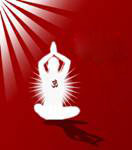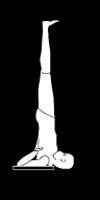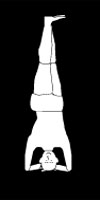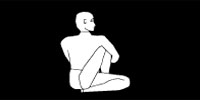INTRODUCTION
Dyspepsia is one of the most common ailments of the bowel (intestines), affecting an estimated 20% of persons in the United States. Perhaps only 10% of those affected actually seek medical attention for their dyspepsia. Dyspepsia is not a particularly good term for the ailment since it implies that there is "dyspepsia" or abnormal digestion of food, and this most probably is not the case.

YOGA AND DYSPEPSIA
Yoga has many connotations. The physical discipline of yoga consists of many asanas or postures which have specific geometric shapes. Make stress management a top priority in your daily life. Stress greatly increases your risk for developing dyspepsia. Try meditation or take a yoga class.

YOGA POSES FOR DYSPEPSIA
Wind relieving pose
This pose is good for the digestive system. It cures constipation, flatulence, gas, acidity, dyspepsia and loss of appetite.
Locust pose
This is a good pose for digestive problems like indigestion, acidity, constipation, gas, dyspepsia.
The Corpse Pose
"Sava" means "dead body" in Sanskrit. To practice this asana, one should lie motionless on the floor like as dead body in order to secure complete relaxation of all parts of his body and remove tensions, both physical and mental.
Sitting Spinal Twist pose
This posture stimulates the pancreas, liver, spleen, kidneys, stomach and ascending and descending colons, useful in the treatment of diabetes, constipation, dyspepsia and urinary problems. It tones the nerve roots, and adjusts the vertebral column. The back muscles are pulled and stretched in a different direction than usual and this relieves them of tension.
Cobra position
This asana strengthens back, abdomen, arms, and shoulders, and increases flexibility in the middle of the back. Improves oxygen intake, increases circulation to the spine and improves digestion.
Wheel pose
This pose is beneficial to the nervous, respiratory, digestive cardiovascular and glandular systems. It influences all the hormonal secretions and relieves various gynecological disorders.
YOGA ASANAS FOR DYSPEPSIA
SARVANGASAN

It also helps in relieving bronchitis, dyspepsia, and varicose veins and increases digestive capacity. It stimulates the thyroid and para-thyroid glands and influences the brain, heart and lungs, and improves blood circulation.
Steps
• Lie on your back with legs and arms straight, feet together and palms on the floor beside your body. While exhaling, raise your legs slowly upto 90 and then the whole body and the rest your weight on the arms so that the chin touches the jugular notch.
• Bring the arms and hands to support your body at the hip region (fingers at the back and thumb in front of the body). The entire weight of your body rests on the head, neck and shoulders while the arms are used for balancing.
• Keep the trunk, legs and hips in a straight line and as vertical as possible Focus your eyes on your toes, with your chin pressed against the chest. Retain the posture for one for three minutes.
• While exhaling, return to the lying position by bringing the leg backward and releasing the hands and the palms.
SHIRSHASANA

This asana is helpful in cases of dyspepsia and constipation. It improves the functions of the reproductive glands and heart muscles and is of great advantage in checking wet dreams.
Steps
• Sit in a kneeling position with the buttocks resting on the heels of the feet.
• Lean forward and place the forearms on the floor in front while keeping the elbows about shoulder distance apart. Interlock the fingers of both hands.
• Place the top of the head flat on the floor with the back of the head pressed against the inside of the interlocked fingers.
• placing the tips of the toes firmly on the floor while lifting the heels, raise the knees off the floor.
• Hold for the duration of the held inhaled breath. When you can't hold the breath comfortable any longer, slowly exhale and return the back to the floor, slide the legs out straight returning to the shava-asana.
ARDHA MATSYENDRASANA

It is highly recommended for treatment of obesity, dyspepsia, diabetes and urinary disorders. One should not do this asana forcibly.
Steps
• Sit on the ground, stretching both the legs forward. Bend your right leg and place the heel under the left hip.
• Now bend your left leg, cross it over and place your foot by the side of the right knee. Try to hold the left ankle by passing the right arm over the left side of the left knee. At the same time, exhale and take the left arm behind the back and press the right side under the ribs.
• This has to be done by twisting the trunk to the back as much as possible. Maintain this posture for a few seconds and increase the duration to two minutes gradually.
• Repeat the same process on the other side for the same duration.
ASTROLOGY
Yoga is a Sanskrit term which means 'to unite'. What is being referred as the 'Yoga' in English, is more commonly known as 'Asana' in Sanskrit, which means different physical postures and poses. It is seen that people of a particular sun sign find it beneficial when they practice certain yoga asanas. According to astrological reports for yoga asanas the above mentioned asanas are said to be effective for those who come under the following zodiac sign.
• VIRGO
• LIBRA
• SCORPIO